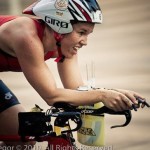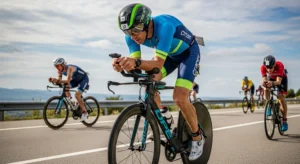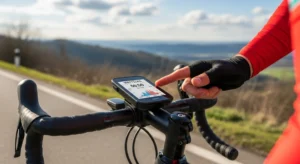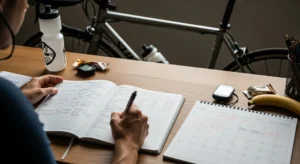A power meter. Why didn’t I get one sooner. Seriously!
I cannot imagine training without one now. It is like trying to run without GPS. Unthinkable! In order to get faster I want feedback. I want data. I want to know if I’m faster this week compared to last. Am I running or riding too fast on an easy day and going to pay for it later? Yes, admittedly a Type A personality but the point stands. If you don’t measure you don’t know.
Don’t misunderstand me; training with heart rate has benefits too. However, power has taken my bike training to a whole new time zone. Before training with power, I did not realize that I was able to push my heart rate up into the 170’s on an indoor trainer ride without my coach standing over me shouting. Unthinkable! The power meter was the “carrot” I needed to help push me to new levels. The “carrot” for me, was knowing what my current power levels are, and then trying to beat them. I believe it has pulled that extra 10% even 20% out of me during workouts that heart rate or RPE (Register of Perceived Exertion) training could not.
There’s a reason all professionals measure, analyze, and moderate their training with power meters, and not just heart rate monitors. Power represents an absolute number to quantify a rider’s performance. Heart rate is a fickle response that can be affected by many variables (fatigue, weather, elevation, etc…)
Although power meters can be very expensive (not the iBike Newton) athletes get a huge amount of value by of training with them. If you have a full time job and limited training time you stand to gain so much more. Power meters allow you to get the most out of the few hours you have to train. Your workouts will be measurable, better quality, and therefore more effective.
I personally train on a quality over quantity program – the Tridot Training Program. And while I train less than I used to, I am a way better cyclist than I have ever been. For any given workout, I have specific power numbers to hit.
For me, the key measurable variables for every training session are; 1.Mechanical intensity (power), 2.Physiological intensity (heart rate), 3.Cadence (leg speed). Bringing these measurements together can provide a powerful impetus to improving training and race performance.
Here are a few points to consider if you’re new to the world of cycling and triathlon and aren’t quite sure of the benefits of training with a power meter over just training with a heart rate:
- An athlete’s heart rate may remain constant over the training period, yet their power output and speed are declining. This cannot be detected with a heart rate monitor. Many variables can cause your heart rate to rise without an equitable rise in power or speed. It’s just your heart rate that elevates, which can affect the overall benefit of your training session.
- Fatigued athletes do their best to train at their normal heart rate, yet they are unlikely to producing their normal power. Heart rate monitors will not reveal this, but a power meter will.
- Power meters enable riders to experiment with cadence and evaluate its effect relative to speed, wattage, and heart rate.
Interval training (high intensity segments) is a critical component of building speed. I’ve known athletes who conduct intervals with heart rate monitors and don’t recognize the start of an interval until their heart rates reach the targeted level. This can take several minutes with a heart rate monitor, due to the heart’s delayed response in. During that time they are guessing how hard to work. Guessing can blow the entire work set and make you too tired to continue. With a power meter you soon learn that the interval starts as soon as the power hits the targeted zone—which means right away. You get the intensity correct immediately with no guesswork. The intervals don’t taper off near the ends any more either. This means no wasted training time and precise intensity. All of this translates into a faster you in less training time!
Here are some simple rules when using a power meter and a heart rate monitor, courtesy of professional Triathlete Brandon Marsh:
For shorter efforts, you will not see a HR response until after the effort is over. That is likely if it is less than 1.5-2 minutes. I think that it generally takes 2-3 minutes for heart rate to fully respond. If you are swimming or running, gear those efforts on perceived exertion (PE) or pace. If you are riding, power meters are still the ‘gold’ standard for those shorter efforts. If you go by PE you will very likely overshoot your effort and then taper off.
When you get to longer efforts, likely 5+ minutes, you can use heart rate a bit more. There is some unexplained variation in heart rate, however. For example, a week or two ago I did a bike workout on Wednesday and the same workout again on Saturday. I don’t know what the ‘real’ difference was but my heart rate was 5 beats lower on Saturday at a higher wattage than it was on Wednesday. Maybe I was a bit more tired on Wednesday or maybe it was because it was warmer and more humid in the house. Either way, I rode 4 minute efforts and my heart rate was 5 beats different. So fatigue, hydration, temp, can play a role. If I was relying solely on heart rate I might have trained at a sub optimal level.
So why should you get a power meter? The short answer is that you simply are more likely to achieve your race goals by training and racing with a power meter than without one. It is the most effective tool you can get to go faster on a bike.
Do you have specific questions for Natasha Ven Der Merwe? Please contact iBikeBlog.




